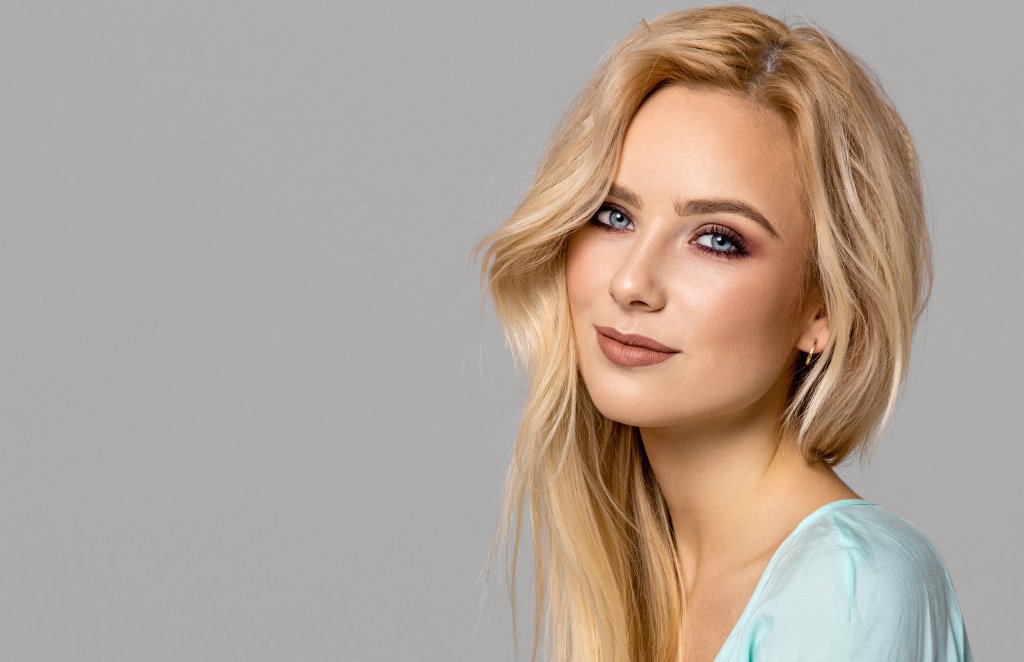MOLES: How to Determine Which Ones Need to Go
SHOULD YOU BE CONCERNED?
Not only are funny-looking moles and freckles unsightly, but they can be a sign of a serious underlying health issue such as skin cancer. Learn everything you need to determine whether yours are likely to be cancerous. Even if they are not, consider having them removed for cosmetic purposes. Get rid of the “ugly duckling” moles and have your dream skin.

Topics
Benign Moles
Funny-Looking Moles
Brown Spots & Freckles
Melanoma
MOLES
BENIGN
'NORMAL' MOLES
Most people have several normal moles on their skin and a few people have lots of them. These ‘normal moles’; are also called melanocytic naevi because they are made up of melanocyte cells. Normal moles may be flat or raised and vary in color from pink to brown or black. They are mostly round or oval shaped but can sometimes be odd shaped. They can be tiny spots or up to several centimeters in size. Normal moles are harmless but in some cases a melanoma may start from within them.
Most moles, spots, freckles and bumps on the skin are harmless, but this is not always the case. About 75% of melanoma are new spots. Watch out for changes in usually clear skin.
MOLES
ABNORMAL
THE 'FUNNY LOOKING' ONES
Funny-looking moles are also called atypical naevi or dysplastic naevi. These moles are basically normal moles with some unusual features such as large size or an odd shape with blurred edges or a flat and bumpy surface. Funny-looking moles may look like melanoma but are actually harmless (benign) spots that don’t need to be removed. However, if you have a few, particularly five or more of these funny-looking moles, your chance of getting a melanoma is increased. If you are unsure about any of your funny-looking moles it’s best to get them checked out.
BROWN SPOTS &
FRECKLES
Beautiful You
Freckles are small flat brown marks that most often appear on the face and other exposed parts of the body in the summer months. They are most often seen in fair-skinned people with red hair but can be seen in people with darker skin colour too. Freckles are formed when the skin is exposed to the sun. Freckles are harmless, but if one starts to look funny compared to others then it’s best to get it checked out.
Larger, flat, brown spots on the face and hands that start to appear in middle-aged people, known as age spots or liver spots, are properly called solar lentigines. These occur in people of all skin types if they have spent too much time exposed to the sun. Solar lentigines are harmless too but because they can sometimes turn into melanoma it is good to get them checked out, especially if they start to change colour or shape.

WHAT IS
MELANOMA
FAST and VIRTUALLY PAINLESS
Melanoma is a potentially serious type of skin cancer, in which there is uncontrolled growth of melanocytes (pigment cells). Melanoma is sometimes called malignant melanoma.
Once the melanoma cells have reached the dermis, they may spread to other tissues via the lymphatic system to the local lymph nodes or via the blood stream to other organs such as the lungs or brain. This is known as metastatic disease or secondary spread. The chance of this happening mainly depends on how deep the cells have penetrated into the skin, which is why it is so critical to consult a doctor if you are concerned about any of the moles on your body.
Preparing
for Removal
Is It Melanoma?
Some melanomas are itchy or tender. More advanced lesions may bleed easily or crust over. Most melanomas have characteristics described by the Glasgow 7-point checklist or by the ABCDE’s of melanoma. Not all lesions with these characteristics are malignant. Not all melanomas show these characteristics.
Precursor
Melanoma can arise from otherwise normal appearing skin (in about 75% of melanomas) or from within a mole or freckle, which starts to grow larger and change in appearance. Precursor lesions include:
- Benign melanocytic naevus (normal mole)
- Atypical or dysplastic naevus (funny-looking mole)
- Atypical lentiginous junctional naevus (flat naevus in heavily sun damaged skin) or atypical solar lentigo
- Large or giant-sized congenital melanocytic naevus (brown birthmark).
Clinical Features
Melanomas can occur anywhere on the body, not only in areas that get a lot of sun. Although melanoma usually starts as a skin lesion, it can also rarely grow on mucous membranes such as the lips or genitals. Occasionally it occurs in other parts of the body such as the eye, brain, or mouth.
First Signs
The first sign of a melanoma is usually an unusual looking freckle or mole. A melanoma may be detected at an early stage when it is only a few millimetres in diameter, but it may grow to several centimetres in diameter before it is diagnosed.
- A melanoma may have a variety of colours including tan, dark brown, black, blue, red and, occasionally, light grey.
- Melanomas that are lacking pigment are called amelanotic melanoma.
- There may be areas of regression that are the colour of normal skin, or white and scarred.
During its horizontal phase of growth, a melanoma is normally flat. As the vertical phase develops, the melanoma becomes thickened and raised.
Procedure
Overview
Follow Up
The main purpose of follow-up is to detect recurrences early (metastatic melanoma) but it also offers an opportunity to diagnose a new primary melanoma at the first possible opportunity. A second invasive melanoma occurs in 5–10% of melanoma patients, and a new melanoma in situ is diagnosed in more than 20% of melanoma patients.
Follow-up appointments may include:
- A check of the scar where the primary melanoma was removed
- A feel for the regional lymph nodes
- A general skin examination
- A full physical examination
- In those with many moles or atypical moles, baseline whole body imaging and sequential macro and dermatoscopic images of melanocytic lesions of concern (mole mapping).
In those with more advanced primary disease, follow-up may include:
- Blood tests, including LDH
- Imaging: ultrasound, X-ray, CT, MRI and/or PET scan.
Tests are not worthwhile for patients with stage 1 or 2 melanoma unless there are signs or symptoms of disease recurrence or metastasis. No tests are necessary for healthy patients who have remained well for 5 years or longer after removal of their melanoma.
The Cure
Melanoma in situ is cured by excision because it has no potential to spread round the body. The risk of spread and ultimate death from invasive melanoma depends on several factors, but the main one is the Breslow thickness of the melanoma at the time it was surgically removed.
Metastases are rare for melanomas < 0.75 mm and the risk for tumours 0.75–1 mm thick is about 5%. The risk steadily increases with thickness so that melanomas > 4 mm have a risk of metastasis of about 40%.
VIRGINIA'S
PREMIER
PLASTIC SURGERY FACILITY
Our state-of-the-art medical facility provides a safe and convenient cosmetic oasis where world class technology and equipment is coupled with a caring, compassionate staff. You will be welcomed into a chic, inviting reception area and greeted by our friendly patient coordinator. Your treatment will be performed in one of our cutting edge suites, and then you will be escorted to our soothing, restorative recovery rooms. Concierge service and boutique amenities await at every stage of your journey.
CONTACT OUR OFFICE:
Our office can provide you will helpful information, schedule a free consultation, and walk you through the process of having the procedure covered by your insurance. You can even get an awesome 3D Vectra scan with us for free (this is like virtual reality for your own desired cosmetic procedure before & after).
Connect with us today!
SCHEDULE YOUR CONSULTATION!
How to Make Mole Removal
MORE AFFORDABLE
PRE-BOOKING DISCOUNT
Patients that pre-book their next appointment decrease our administrative and marketing expenditures. Pre-booking also ensures that your anti-aging efforts are optimized and decrease the time of your next visit. We want to pass these savings on to YOU!
EXECUTIVE MEMBERSHIP
Join our Executive Membership Program and get our best rates across all cosmetic options all year long!
WRITE A REVIEW
We are confident that you will happy with your treatment. After receiving a Botox treatment from us, help us spread the word about your treatment by writing a review on Google to help not only other potential patients learn more about your treatment but help them learn more about Dr. Chang and the team at Aesthetica. In return, receive a credit toward your next service. We thank you!
REFER A FRIEND
Referring a friend is the ultimate demonstration of your satisfaction and appreciation. We want to show our appreciation for giving you something more in return.
FACEBOOK SPECIALS
Friends and patients that are on our Aesthetica Facebook and Instagram pages will not only stay up to date on the newest and greatest advancements in cosmetic surgery, but will receive exclusive offers for many of our services.



